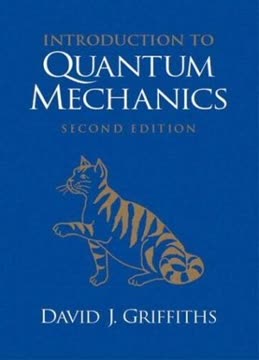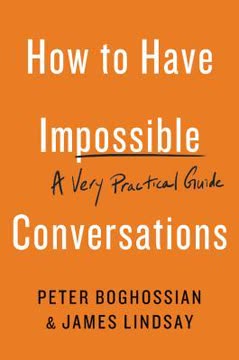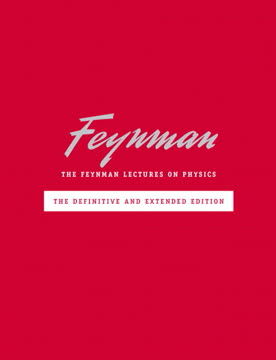Key Takeaways
1. Master the fundamentals of mathematics for physics
"The first thing you must learn is the mathematics. And that involves, first, calculus. And in calculus, differentiation."
Calculus is essential. Differentiation and integration are the cornerstones of physics calculations. Practice these operations until they become second nature, as you'll use them constantly in problem-solving.
Algebra is equally important. Ensure you can manipulate algebraic expressions effortlessly. This skill is crucial for simplifying complex equations and deriving relationships between physical quantities.
Memorization has limits. While it's important to know basic formulas, understanding the underlying principles is more valuable. Focus on developing the ability to derive equations and relationships from fundamental concepts.
2. Understand vectors and their operations deeply
"A vector is like a push that has a certain direction, or a speed that has a certain direction, or a movement that has a certain direction—and it's represented on a piece of paper by an arrow in the direction of the thing."
Vectors are fundamental. They represent quantities with both magnitude and direction, such as force, velocity, and acceleration. Understanding vector operations is crucial for solving physics problems.
Key vector operations:
- Addition and subtraction
- Scalar (dot) product
- Vector (cross) product
- Projection onto axes
Visualize vector problems. Develop the ability to represent vector problems graphically. This skill will help you understand the physical situation and guide your problem-solving approach.
3. Apply physical laws to solve real-world problems
"The physical laws can be summarized by some equations, which I'll write down here."
Core physical laws:
- F = dp/dt (Force equals rate of change of momentum)
- Conservation of momentum
- Conservation of energy
- F = ma (for non-relativistic cases)
Apply laws contextually. Recognize which laws are applicable to a given problem. Often, multiple laws must be combined to solve complex situations.
Understand approximations. In many real-world scenarios, simplifying assumptions are necessary. Learn when and how to make these approximations without significantly affecting the solution's accuracy.
4. Grasp the principles of rotational dynamics and gyroscopes
"If you have a whole lot of levers moving a lot of weights, you can do this: as you drive the thing along, and all the weights begin to move because of all the levers, you're doing a certain amount of work, W."
Rotational motion is complex. Understanding the relationship between angular momentum, angular velocity, and torque is crucial for analyzing rotating systems.
Gyroscopes demonstrate key principles:
- Conservation of angular momentum
- Precession
- Nutation
Applications are diverse. Gyroscopic principles are used in navigation systems, stabilization devices, and even in understanding astronomical phenomena.
5. Explore the applications of inertial guidance systems
"The very best ones have a drift of not more than 1/100th of a degree per hour."
Inertial guidance is precise. Modern systems can maintain incredibly accurate orientations over long periods, enabling navigation without external references.
Key components:
- Gyroscopes for maintaining orientation
- Accelerometers for measuring changes in velocity
- Integrating circuits for calculating position
Continuous improvement. The development of inertial guidance systems showcases the iterative nature of engineering, constantly pushing the boundaries of precision and reliability.
6. Recognize the importance of angular momentum in astronomy and quantum mechanics
"Angular momentum is a central feature in the analyses of quantum mechanics, and that's in fact one of the main reasons for going so far into it in mechanics—in order to be able to understand the phenomena in atoms."
Astronomical implications. Angular momentum plays a crucial role in understanding the formation and behavior of celestial bodies, from planets to galaxies.
Quantum mechanical connections. In the quantum realm, angular momentum is quantized, leading to discrete energy levels in atoms and molecules.
Multidisciplinary concept. The principles of angular momentum span classical mechanics, astronomy, and quantum physics, demonstrating the interconnectedness of physical theories.
7. Develop problem-solving skills through practice and intuition
"The problem of how to deduce new things from old, and how to solve problems, is really very difficult to teach, and I don't really know how to do it."
Practice is essential. Solve a wide variety of problems to develop your problem-solving skills. Start with simpler problems and gradually increase complexity.
Develop physical intuition. Try to understand the physical meaning behind equations and formulas. Visualize problems and think about expected outcomes before diving into calculations.
Multiple approaches. Learn to tackle problems from different angles. Often, there are multiple valid ways to solve a physics problem, each offering unique insights.
Learn from mistakes. Analyze incorrect solutions to understand where you went wrong. This process is often more educational than getting the right answer on the first try.
Last updated:
FAQ
What's "Tips on Physics" by Richard P. Feynman about?
- Supplement to Lectures: "Tips on Physics" is a problem-solving supplement to "The Feynman Lectures on Physics," designed to enhance understanding through practical exercises and insights.
- Focus on Problem-Solving: It emphasizes problem-solving techniques and provides additional exercises to help students apply the concepts learned in the lectures.
- Interviews and Memoirs: The book includes interviews with Feynman and his colleagues, offering personal insights into the creation of the lectures and Feynman's teaching philosophy.
- Historical Context: It provides historical context and anecdotes about the development of the lectures and the educational environment at Caltech.
Why should I read "Tips on Physics" by Richard P. Feynman?
- Enhance Understanding: It offers a deeper understanding of physics concepts through practical exercises and problem-solving strategies.
- Learn from a Master: Gain insights from one of the most brilliant physicists and educators, Richard Feynman, known for his unique teaching style.
- Supplementary Material: It serves as a valuable supplement to "The Feynman Lectures on Physics," providing additional context and exercises.
- Inspiration and Motivation: The book includes motivational stories and advice for students, helping them navigate the challenges of learning physics.
What are the key takeaways of "Tips on Physics"?
- Problem-Solving Techniques: The book emphasizes the importance of developing strong problem-solving skills in physics.
- Understanding Over Memorization: Feynman advocates for understanding the interrelationships of nature rather than rote memorization of formulas.
- Practical Applications: It highlights the practical applications of physics concepts in real-world scenarios, such as inertial guidance systems.
- Continuous Learning: Encourages students to explore and understand physics through examples and exercises, fostering a lifelong learning mindset.
What are the best quotes from "Tips on Physics" and what do they mean?
- "It is impossible to teach satisfactorily." This quote reflects Feynman's belief that teaching is a complex and evolving challenge, emphasizing the need for continuous improvement in educational methods.
- "The joy of learning physics, simply for the pleasure of it, became my highest priority." This quote from Michael A. Gottlieb highlights the intrinsic motivation and passion for learning that Feynman inspired in his students.
- "You have to have a certain feeling for the real situation!" Feynman stresses the importance of intuition and understanding the physical reality behind mathematical equations.
- "The real utility of physicists...is not to talk about what’s already known, but to do something new." This quote underscores the value of innovation and discovery in the field of physics.
How does "Tips on Physics" enhance problem-solving skills?
- Practical Exercises: The book provides a variety of exercises that challenge students to apply physics concepts in different scenarios.
- Step-by-Step Solutions: It offers detailed solutions and explanations, helping students understand the reasoning behind each step.
- Diverse Problems: The exercises cover a wide range of topics, from basic mechanics to advanced concepts, ensuring comprehensive skill development.
- Encouragement of Intuition: Feynman encourages students to develop intuition and a deeper understanding of the physical world, beyond just solving equations.
What is the significance of the interviews included in "Tips on Physics"?
- Personal Insights: The interviews provide personal insights into Feynman's teaching philosophy and the development of the lectures.
- Historical Context: They offer historical context about the educational environment at Caltech and the challenges faced in creating the lectures.
- Collaborative Effort: Highlight the collaborative effort between Feynman, Leighton, and Sands in producing the lectures and supplementary materials.
- Inspirational Stories: The interviews include inspirational stories and anecdotes that motivate students and educators alike.
How does "Tips on Physics" address the challenges of learning physics?
- Emotional Challenges: Feynman acknowledges the emotional challenges students face, such as feeling below average, and offers advice on overcoming them.
- Practical Advice: Provides practical advice on how to approach learning physics, emphasizing understanding and intuition over memorization.
- Encouragement of Exploration: Encourages students to explore topics that interest them, fostering a sense of curiosity and engagement.
- Supportive Environment: Highlights the importance of a supportive educational environment and the role of collaboration among students and educators.
What are some practical applications of physics discussed in "Tips on Physics"?
- Inertial Guidance Systems: The book explains the principles behind inertial guidance systems, used in submarines and aircraft.
- Gyroscopes: Discusses the use of gyroscopes in navigation and stabilization, illustrating the practical application of rotational dynamics.
- Rocket Propulsion: Covers the fundamental equations of rocket propulsion and the challenges of designing efficient propulsion systems.
- Satellite Motion: Explores the physics of satellite motion and the calculations involved in determining escape velocity and orbital dynamics.
How does "Tips on Physics" relate to "The Feynman Lectures on Physics"?
- Supplementary Material: It serves as a supplementary material to the lectures, providing additional exercises and insights.
- Problem-Solving Focus: While the lectures cover theoretical concepts, "Tips on Physics" focuses on practical problem-solving techniques.
- Historical Context: Offers historical context and personal anecdotes related to the creation of the lectures.
- Enhanced Understanding: Aims to enhance students' understanding of the lectures by providing practical applications and exercises.
What teaching principles does Richard P. Feynman emphasize in "Tips on Physics"?
- Understanding Over Memorization: Feynman emphasizes the importance of understanding concepts rather than memorizing formulas.
- Intuition and Exploration: Encourages students to develop intuition and explore topics that interest them.
- Practical Problem-Solving: Focuses on practical problem-solving techniques and real-world applications of physics concepts.
- Continuous Improvement: Advocates for continuous improvement in teaching methods and adapting to students' needs.
How does "Tips on Physics" address the emotional challenges faced by students?
- Acknowledgment of Challenges: Feynman acknowledges the emotional challenges students face, such as feeling below average.
- Rational Perspective: Offers a rational perspective on these challenges, emphasizing that being below average at Caltech is still exceptional.
- Encouragement and Support: Provides encouragement and support, advising students to focus on their strengths and interests.
- Long-Term Perspective: Emphasizes the long-term benefits of persevering through challenges and the value of a Caltech education.
What are some advanced topics covered in "Tips on Physics"?
- Rotational Dynamics: The book delves into advanced topics in rotational dynamics, including gyroscopes and inertial guidance systems.
- Relativistic Physics: Covers concepts related to relativistic energy and momentum, providing a deeper understanding of modern physics.
- Quantum Mechanics: Discusses the role of angular momentum in quantum mechanics and its significance in atomic physics.
- Astronomical Applications: Explores the application of physics concepts in astronomy, such as the motion of satellites and the formation of nebulae.
Review Summary
Feynman's Tips on Physics receives mixed reviews, with an overall rating of 4.23/5. Many readers appreciate Feynman's unique approach and insight, finding the book helpful for understanding physics concepts. Some praise the historical context and problem-solving techniques presented. However, others criticize the misleading title and limited practical tips. The book is seen as a companion to Feynman's lectures rather than a standalone guide. Readers value Feynman's teaching style and humor, but some find the content too basic or confusing for beginners.
Similar Books










Download PDF
Download EPUB
.epub digital book format is ideal for reading ebooks on phones, tablets, and e-readers.









